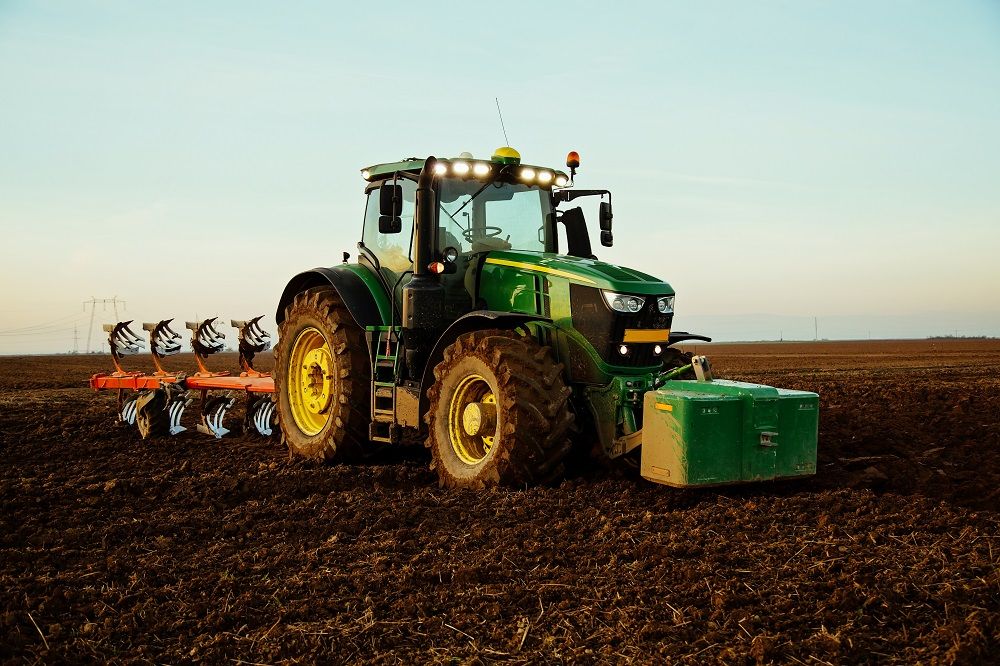Getting to know the Rotavator and its Benefits for Agricultural Land

Rotavator
(Istimewa)Since early 2017, Indonesia has been gearing up its agricultural industry to achieve its goal to be the World Food Barn by 2045. As reported by Liputan6, the then Head of the Planning Bureau of the Ministry of Agriculture, Kasdi Subagyono, stated that this was the desire of President Joko Widodo to continue to boost the agricultural sector.
Since then, the Ministry of Agriculture has been introducing programs to assist farmers in achieving this goal. From providing capital through the People’s Business Credit (KUR), utilizing unconventional lands such as swamps as agricultural land, to introducing farmers to modern agriculture.
Modern agriculture can help farmers work more efficiently by using technology and innovation. This includes effective but sustainable pest control, post-harvest processing, and most importantly the use of machines that simplify and accelerate farmers’ activities. Machinery in modern agriculture assists farmers in doing the more labor-heavy tasks, resulting in a faster planting turnover. There are a lot of machines used in the operation of agriculture. One of them is the rotavator that is used for land preparation before planting.
Definition and benefits of rotavator
A rotavator is a tool that can be attached to a tractor and has many rotating blades on its underside. The machine churns and aerates the soil before the planting process. It does this by flipping and turning the soil with its blade and breaking up large chunks of soil. It can also help to manage the water level of the soil. On hard, dry soil, for example, the water will be absorbed by the soil before it can hydrate the seeds. Making it very hard for the seeds to survive.
There are a few things to keep in mind before using a rotavator. First is to remember to remove any existing growth such as weeds. As its job is to cut through and mix the soil, removing the weeds will help avoid having them spread around by the blades of the rotavator. Having the weeds mixed up into the soil can result in an invasion of weeds, making them hard to remove and threatening the health of the plant.
Secondly, make sure that the soil isn’t too hard, too wet, or too muddy. These conditions can make it hard for the rotavator to work efficiently and, in some cases, can cause damage to the blade. Soil that has a high level of clay, for example, can be quite hard and might need to be watered to soften the texture. For this type of soil, water them a few days before using the rotavator to allow the soil to absorb the water and soften sufficiently. It also ensures that the soil won’t be too soggy and stick to the rotavator blades.
Lastly, as with using any heavy and powerful equipment, special care must be taken to avoid harm and ensure safety. It might take several passes to completely break up the soil. Try not to dig too deep on the first pass of the rotavator. Let the blade dig into the soil slowly to avoid any accident or damage. As the topsoil starts to loosen, a deeper setting can continue until the soil is fully plowed.
Mixing the soil using rotavator results in richer soil, as the maximum amount of nutrients is supplied to plants by turning the soil. Turning the soil lets the deeper soil come up and mixes with the upper soil that has fewer nutrients due to it being absorbed by plants. It also allows the soil to have a better structure. The better the soil structure means greater agricultural output, resulting in a higher profit.
Fertilizer recommendations to mix in with the soil
As part of the land preparation for planting, a rotavator can also help to mix in fertilizer. Fertilizer better supplies the plant with nutrients through the roots because it has a better chance of being distributed throughout the plant. It is why it’s better to apply fertilizer to the soil surrounding the roots. Mixing fertilizer with the soil before planting is even more beneficial because it allows the soil to regain its fertility after the plant rotation.
Organic fertilizer like compost or manure is preferable when mixed in with the soil. It allows the soil to balance out its nutrients naturally by providing them with microorganisms. Keep in mind to use mature compost or manure that has broken down properly. Immature compost continues breaking down as it is put into the soil and will compete with the plant for nitrogen. It can result in stunted growth for the plant.
Ecofert, an organic fertilizer enriched with superior microorganisms, is a perfect option when compost or manure is hard to find. This fertilizer comes in a granule form and contains active ingredients Aspergillus niger, Pseudomonas mendocina, Bacillus subtilis, and Bacillus flexus. The active ingredients increase the availability of Nitrogen and Phosphorus in the soil and help to increase soil nutrient absorption.
Whichever organic fertilizer that you use, make sure to properly mix it with the soil using a rotavator for healthy and fruitful growth. Happy planting!
Written by: Safaanah
